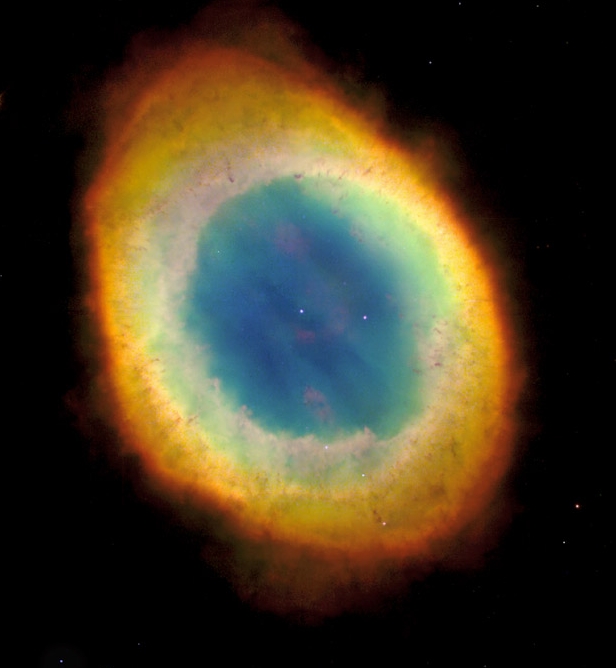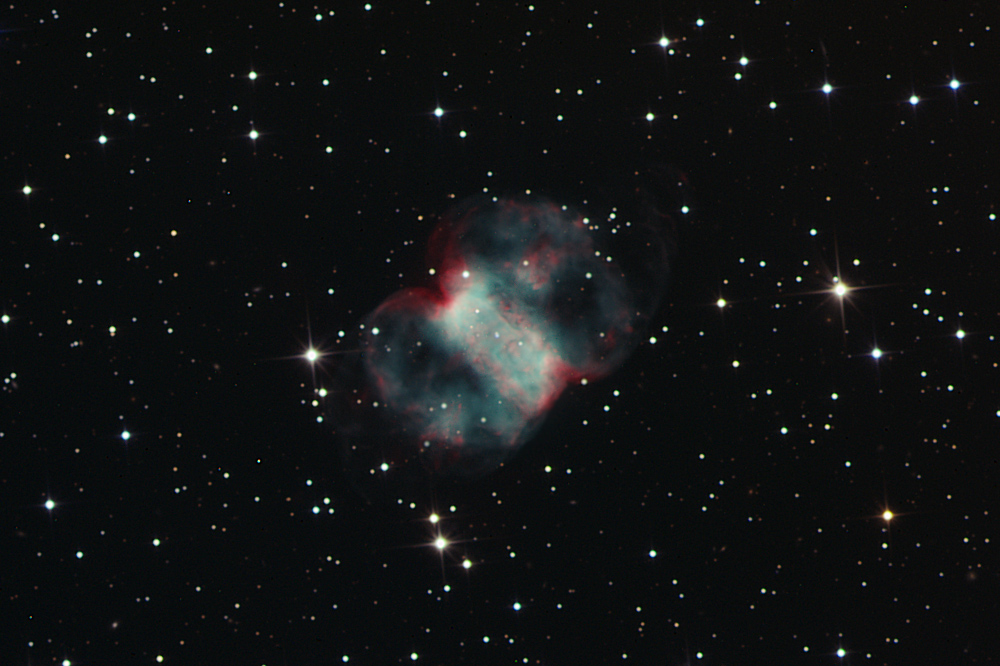by Ann » Fri Jul 23, 2010 3:17 pm
Another false-color planetary nebula. Personally I can't stand them.
Normally, I really feel that I understand what the color of astronomical objects signifies. In other words, I understand why things are the color they are. But when it comes to planetary nebulae, I'm stumped. Yes, I understand that the central star is usually blue because it is so hot. (But I'm not sure about the very, very hottest and youngest central stars. Are they blue too? Or are they so hot that their visual spectrum is pretty "flat"?)
Gaaahhh. I
hate not understanding the color of things. It makes some sort of sense to me that the central star of a planetary nebula should be blue due to its very high temperature. Similarly, the gas closest to the central star should be the hottest and in the highest state of excitation, so therefore the gas closest to the central star should be blue-green due to OIII emission. Further out, the ultraviolet radiation from the tiny burnt-out stellar core should not be enough to make oxygen flouresce, but instead we should see red hydrogen emission. There might be an intermediate stage where blue-green OIII emission and red hydrogen emission mingles to case a yellow glow. The Ring Nebula, M57, is extremely well-behaved as planetary nebulae go:

Thank you, M57, I understand, more or less, what you are all about. (Although I suspect that this Hubble image shows red HII emission as green, leaving only sulphur emission as red, causing the nebula to look a bit too blue, too green and too yellow and not sufficiently red. Still, I think I understand the image as well as the nebula, and we have a clear progression of temperatures from the highest to the lowest as we move away from the hot central star.)
But M76? Is that one well-behaved? No!!!! Take a look at those lobes blowing out from the boxy "bar" of the nebula. Why are those lobes blue???? What business do they have being blue? How can they be more highly excited that structures closer to the central star????
Gahhh!!!! I hate it!
Here is another picture of M76, which may be more true-colored, or at least I think so:

The lobes are still blue, and I still understand nada. <puke icon>
Ann
Another false-color planetary nebula. Personally I can't stand them.
Normally, I really feel that I understand what the color of astronomical objects signifies. In other words, I understand why things are the color they are. But when it comes to planetary nebulae, I'm stumped. Yes, I understand that the central star is usually blue because it is so hot. (But I'm not sure about the very, very hottest and youngest central stars. Are they blue too? Or are they so hot that their visual spectrum is pretty "flat"?)
Gaaahhh. I [i]hate[/i] not understanding the color of things. It makes some sort of sense to me that the central star of a planetary nebula should be blue due to its very high temperature. Similarly, the gas closest to the central star should be the hottest and in the highest state of excitation, so therefore the gas closest to the central star should be blue-green due to OIII emission. Further out, the ultraviolet radiation from the tiny burnt-out stellar core should not be enough to make oxygen flouresce, but instead we should see red hydrogen emission. There might be an intermediate stage where blue-green OIII emission and red hydrogen emission mingles to case a yellow glow. The Ring Nebula, M57, is extremely well-behaved as planetary nebulae go:
[img]http://math.ucr.edu/home/baez/ring_nebula.jpg[/img]
Thank you, M57, I understand, more or less, what you are all about. (Although I suspect that this Hubble image shows red HII emission as green, leaving only sulphur emission as red, causing the nebula to look a bit too blue, too green and too yellow and not sufficiently red. Still, I think I understand the image as well as the nebula, and we have a clear progression of temperatures from the highest to the lowest as we move away from the hot central star.)
But M76? Is that one well-behaved? No!!!! Take a look at those lobes blowing out from the boxy "bar" of the nebula. Why are those lobes blue???? What business do they have being blue? How can they be more highly excited that structures closer to the central star????
Gahhh!!!! I hate it!
Here is another picture of M76, which may be more true-colored, or at least I think so:
[img]http://images.astronet.ru/pubd/2006/11/06/0001217359/Messier76_seip_big.jpg[/img]
The lobes are still blue, and I still understand nada. <puke icon>
Ann